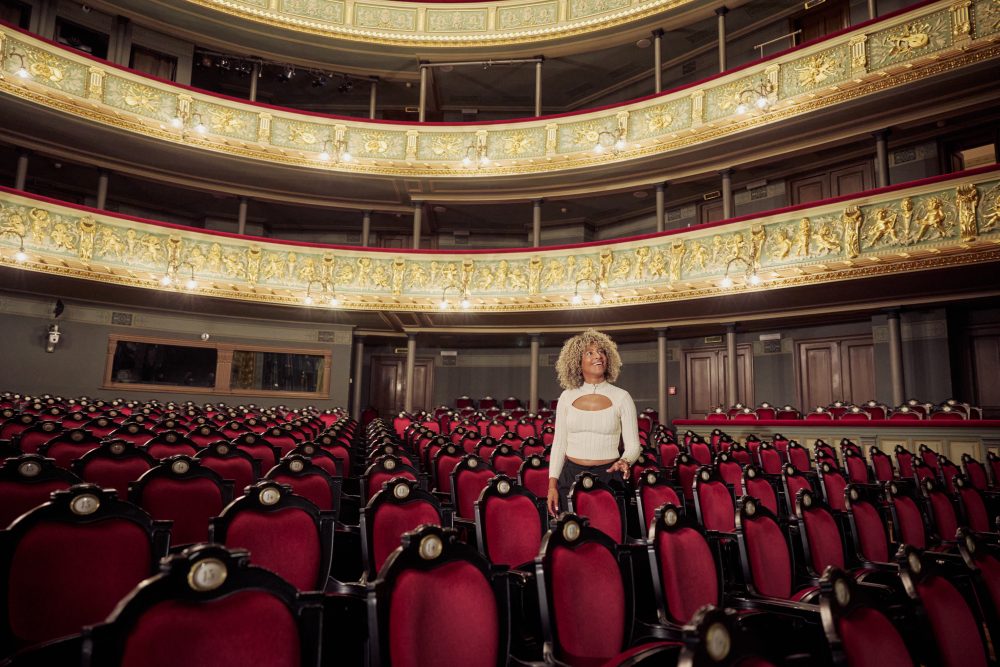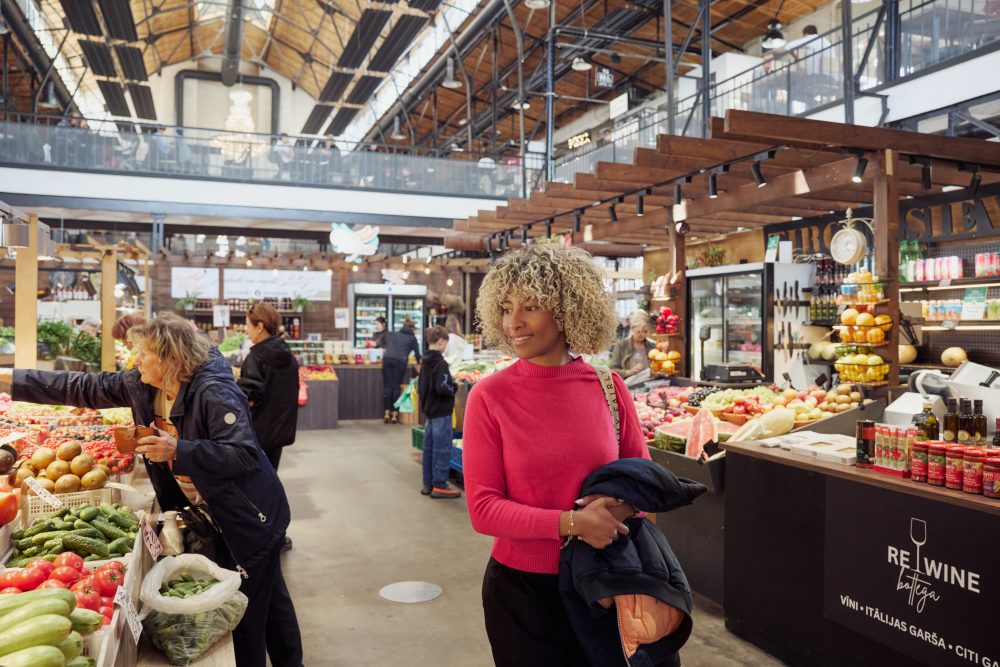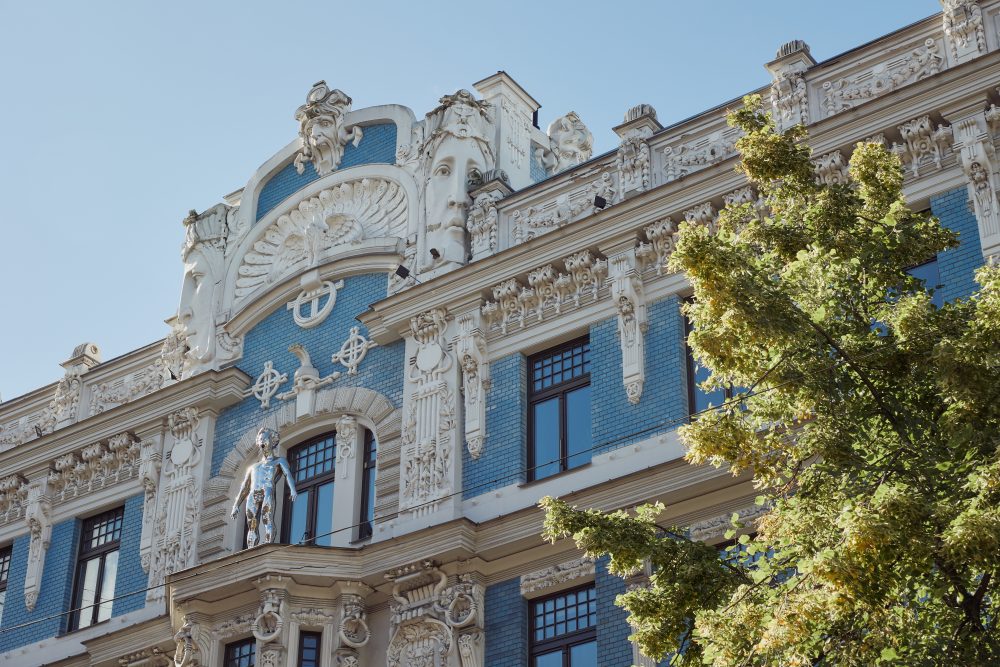Inspired Riga: a tapestry of culture and ideas
Riga is shaped by contrasts, the flow of the Daugava carrying both its past and promise. Beyond the postcard skyline, the city’s spirit reveals itself in performance halls that light up with artistry, in studios where old fabrics are given new life, in neighborhood markets bursting with color, and in saunas where steam carries centuries of ritual. To wander off the beaten path here is to trace the many currents of the city’s creativity, each turn offering a new way to experience its soul.
Riga’s cultural heart: the National Opera and Ballet
On the right bank of the Daugava, Riga’s story unfolds in layers. Along Alberta and Elizabetes streets, Art Nouveau buildings rise with elaborate facades, sculpted details, and graceful curves that reflect the city’s flourishing at the turn of the 20th century. Wandering further in, the atmosphere shifts as cobbled lanes and hidden courtyards give way to the Old Town. Here, Gothic church spires tower over colorful merchant houses, and centuries of trade and tradition are still felt in the rhythm of the squares and streets. Together, these neighborhoods hold the essence of Riga’s past while continuing to shape its everyday life.
The Latvian National Opera and Ballet is often described as the cultural heart of Riga. The “White House of Riga” fills its stage with nearly 200 performances each season, from sweeping opera and timeless ballet to symphonic concerts, contemporary works, and family shows. One evening might draw you into the intensity of Verdi, another into the elegance of Tchaikovsky, the grand drama of Wagner, or the thrill of a new Latvian composition. Whatever the choice, the program always feels like an invitation to experience the city at its most culturally alive.
That sense of spectacle begins even before the curtain rises. The foyer glitters with chandeliers, marble, and gilded details, while sweeping staircases invite visitors upward. The main auditorium is warm and dramatic, with deep red velvet seats, golden balconies, and a ceiling painted with mythic scenes. It is easy to imagine stepping onto the stage yourself, bathed in the same glow as generations of performers.

Sustainable fashion in action: Bourzma Studio
A few paces away inside the shopping center Galerija Centrs with its unique glass passageway, Bourzma Studio is where sustainable fashion turns into hands-on expression. The shop and studio is on a mission to redefine the fashion industry through bold style, conscious consumption and community building. During its workshops, the studio opens up to everyone ready to play and explore, guided by experienced designers. Well-worn T-shirts, jeans and blazers are cut, sewn, tie-dyed, screen printed, and pressed to become creative reinventions. For those without pieces to upcycle, bins of forgotten fabrics wait to be transformed.
Upcoming Latvian designers also find their spotlight at Bourzma Studio, which offers a window into how local talent is shaping the future of sustainable style. The studio is part of a larger roaming platform that connects fashion with art and music, creating collaborative spaces exploring new mindsets and building the circular fashion movement.
Following the flow of creativity across the river, the journey arrives at one of Riga’s great monuments to imagination and knowledge. Opposite Old Riga rises the National Library of Latvia, known as the Castle of Light. Its angular form seems to lift toward the sky, a symbol of cultural resilience imagined by Latvian-American architect Gunnar Birkerts. Inside, the library unfolds as a place of discovery and reflection, where exhibitions, reading rooms, and quiet corners offer serene spaces for study and retreat. From the upper floors, the city opens wide in panoramic view, and among the collections rests the Cabinet of Folksongs, a UNESCO-recognized treasure of Latvian language and memory. From this towering monument to learning and ideas, the path continues to the bustling rhythms of community life.
Community spirit: local and international flavors at Āgenskalns market
Āgenskalns is a neighborhood with a charm all its own. Leafy parks and ponds mix with streets lined by 19th- and early 20th-century wooden houses, giving it a relaxed and slightly bohemian character. At its center stands Āgenskalns market, where Riga’s past and present meet in a vibrant public space. The grand 1898 market hall is composed of warm red brick and intricate metal structures, with lofty galleries that create a sense of openness and light. Today this landmark serves as an inclusive, diverse, and environmentally friendly space celebrating innovation and community.
Entering the ground floor, stalls from local farmers and producers overflow with seasonal fruits and vegetables, fresh cheeses and crusty breads. It’s an ode to Latvian artisanship, with locally brewed beers and ciders, coffee roasted in small batches, and fish and meats from independent producers. Regional delicacies mingle with international flavors at the street food stalls, serving up heavenly treats from Ukraine to Japan. These are savored over the buzz of conversation at tables set within the hall’s airy open spaces.
Āgenskalns is more than a market: it’s a cultural hub pulsing with festivals, gigs, workshops, and pop-ups. It hosts second-hand treasures, books, local design, and specialty shops that spark curiosity and creativity. Upstairs, a unique co-creation kitchen opens space for exploring healthy lifestyles, food heritage, and fresh business ideas.
From the lively stalls of the Āgenskalns, the journey turns inward, toward a quieter world of ritual and reflection.

Steam and spirit: Latvia’s sauna ritual
The Latvian sauna, or pirts, is an experience of heat, ritual, and renewal. Guided by a sauna master, it invites you to slow down and follow a rhythm that has been part of Latvian life for centuries. Saunas have historically served to cleanse and to mark milestones. That tradition continues today, carried forward by masters who preserve old knowledge while sharing it with newcomers.
The ceremony moves at an unhurried pace. Bundles of birch or oak are soaked and used to sweep gently across the skin. Herbal infusions poured over the stones release waves of steam that rise and fade in the quiet room. Between rounds of heat, cool air or cold water sharpens the senses. Step by step, the body relaxes, the mind clears, and a sense of balance returns.
This living tradition can be experienced with sauna masters in Riga’s outer neighborhoods such as Čiekurkalns, or at the Sauna Museum beyond the city, where historic bathhouses bring the story of sauna to life. This ancient tradition goes beyond relaxation. It is a connection to history, to nature, and to oneself.
Hidden Riga: life in the spaces between
Riga rewards those who wander past the obvious. Its treasures are not only in the Gothic spires or Art Nouveau facades, but in the hidden courtyards, the quiet libraries, the craft workshops, and the everyday rituals that give the city its pulse. To travel here offbeat is to experience a culture in constant creation — rooted in history, alive with imagination, and always inviting you to step inside its story.
